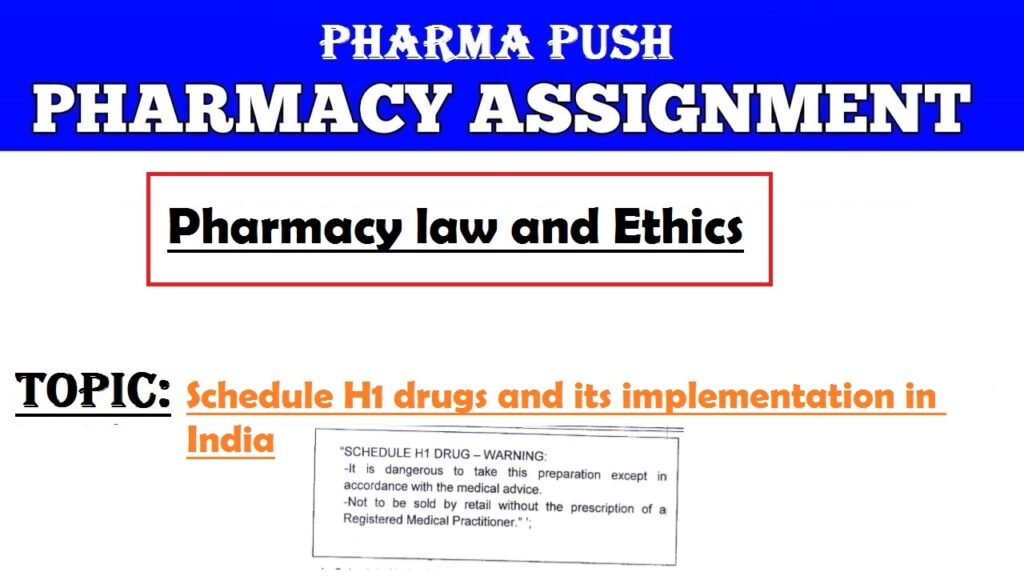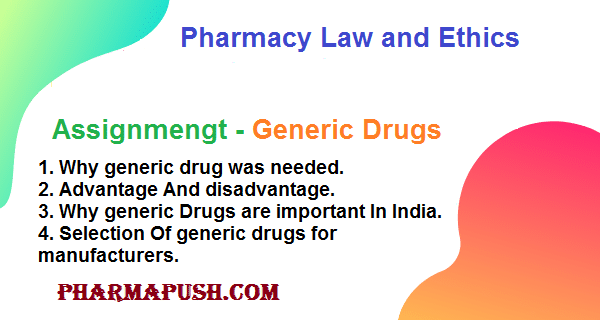Introduction
Counterfeit or spurious medicines refer to drugs that are intentionally or fraudulently mislabeled with respect to their identity, composition, or source. These fake medications can be ineffective, unsafe, or even deadly, posing significant risks to public health. Counterfeit drugs may contain incorrect ingredients, incorrect doses, or no active ingredients at all.
Consequences of Substandard and Counterfeit Medicines
The consequences of substandard and counterfeit medicines can be understood through various theoretical perspectives, considering the impact on individuals, society, and the healthcare system. Here are some theoretical details to help explain the consequences:
- Health Belief Model (HBM): The Health Belief Model posits that individuals take health-related actions based on their perceptions and beliefs. In the context of substandard and counterfeit medicines, if individuals believe that the medications they are purchasing are genuine and effective, they are more likely to adhere to treatment plans. However, if they unknowingly receive substandard or counterfeit drugs, it can lead to treatment failures and negative health outcomes.
- Social Cognitive Theory (SCT): SCT emphasizes the role of observational learning and social influence in shaping behavior. In the case of counterfeit medicines, social factors such as peer influence, community norms, and trust in healthcare systems play a crucial role. If individuals observe others in their community using counterfeit drugs without apparent negative consequences, it may influence their own decisions, contributing to the widespread use of substandard medications.
- Diffusion of Innovations Theory: This theory explores the process by which new ideas or innovations spread within a society. Counterfeit medicines can be considered a negative innovation that spreads through various channels, including illegal markets and unauthorized online pharmacies. The consequences of substandard medicines, such as treatment failures and health risks, can be seen as factors that hinder the successful adoption of genuine pharmaceutical innovations.
- Structural Functionalism: This sociological perspective focuses on how institutions and structures contribute to the stability of society. The presence of substandard and counterfeit medicines can be seen as a dysfunction within the healthcare system. When the integrity of the pharmaceutical supply chain is compromised, it disrupts the smooth functioning of the healthcare system, leading to negative consequences such as increased healthcare costs, decreased trust, and compromised public health.
- Risk Perception Theory: This theory suggests that individuals evaluate risks based on factors such as the severity of the consequences, their susceptibility, and their level of control. In the case of substandard and counterfeit medicines, individuals may underestimate the risks associated with purchasing medications from unauthorized sources. Lack of awareness and misinformation can contribute to a diminished perception of the potential harm, leading to continued use of counterfeit drugs.
- Institutional Theory: From an institutional perspective, the presence of substandard and counterfeit medicines highlights failures in regulatory and institutional structures. Institutions responsible for regulating the pharmaceutical industry and ensuring the safety of medications may face challenges in enforcement and monitoring. Counterfeit drugs persist when institutions fail to effectively fulfill their roles, contributing to the erosion of public trust in these systems.
You May Like: Overview of Pharma marketing practices
Understanding the consequences of substandard and counterfeit medicines from these theoretical perspectives provides insights into the complex interplay of individual behaviors, societal influences, and institutional structures. Addressing the issue requires a comprehensive approach that considers not only individual decision-making but also the broader social, economic, and regulatory contexts.
Challenges to Preventing Counterfeit Medicines
Preventing counterfeit medicines poses several challenges, as the issue is complex and multifaceted. Some of the key challenges include:
- Global Supply Chain Complexity: The pharmaceutical supply chain is highly complex, involving numerous stakeholders, from manufacturers to distributors to retailers. The global nature of the supply chain makes it challenging to monitor and regulate effectively, allowing counterfeit drugs to enter the system at various points.
- Limited Regulatory Oversight: In some regions, regulatory authorities may lack the resources, infrastructure, or enforcement capabilities needed to effectively monitor and regulate the pharmaceutical industry. This creates loopholes that counterfeiters can exploit to introduce fake drugs into the market.
- Lack of International Cooperation: Counterfeit medicine is a transnational issue that requires international collaboration. Limited cooperation among countries and regulatory bodies can hinder efforts to track and apprehend counterfeiters who may operate across borders.
- Sophisticated Counterfeiting Techniques: Counterfeiters continually adapt and develop sophisticated techniques to mimic the appearance of genuine drugs. This includes replicating packaging, holograms, and other security features, making it difficult for consumers and even professionals to distinguish between genuine and counterfeit products.
- Online Pharmacies and E-commerce: The rise of online pharmacies and the ease of e-commerce have facilitated the sale of counterfeit medicines. Illegitimate online platforms make it challenging to regulate and monitor the sale of medications, allowing counterfeit drugs to reach a broader audience.
- Consumer Awareness and Education: Lack of awareness among consumers about the risks associated with counterfeit medicines is a significant challenge. Some individuals may unknowingly purchase medications from unverified sources due to ignorance or the pursuit of cost savings, contributing to the demand for counterfeit drugs.
- Underreporting and Detection Challenges: Cases of counterfeit medicines often go underreported due to various factors, including the reluctance of victims to come forward, limited awareness, and challenges in detecting counterfeit products. This makes it difficult to assess the true extent of the problem.
- Economic Incentives for Counterfeiters: Counterfeit drug production can be highly lucrative, offering significant financial rewards for criminal organizations. The potential for high profits provides a strong incentive for counterfeiters to continue their illegal activities.
- Corruption and Weak Governance: Corruption within regulatory bodies or law enforcement agencies can compromise efforts to combat counterfeit medicines. Weak governance structures may lead to regulatory gaps and insufficient enforcement, allowing counterfeiters to operate with relative impunity.
- Inadequate Technology and Infrastructure: Some regions may lack the technological infrastructure needed to implement advanced track-and-trace systems or other technologies that can help secure the pharmaceutical supply chain. Insufficient investment in technology hampers efforts to prevent and detect counterfeit medicines.
Factors encouraging counterfeiting of drugs
Several factors contribute to the encouragement of counterfeiting drugs. These factors are often interconnected and may vary in prevalence across different regions. Here are some key factors that facilitate the counterfeiting of drugs:
- High Profit Margins: Counterfeit drugs can yield high profits for criminals with relatively low production costs. The potential for substantial financial gains serves as a significant incentive for engaging in the illicit trade of counterfeit medicines.
- Globalization of the Pharmaceutical Supply Chain: The increasing globalization of the pharmaceutical supply chain has created opportunities for counterfeiters to exploit the complexity and lack of effective oversight. The extensive network of manufacturers, distributors, and retailers across multiple countries provides ample points of entry for counterfeit drugs.
- Inadequate Regulatory Oversight: Insufficient regulatory oversight, particularly in certain regions or countries, creates an environment where counterfeiters can operate with less risk of detection and punishment. Weak regulatory frameworks may fail to deter or effectively penalize those involved in the production and distribution of counterfeit medicines.
- Technological Advancements: While technology can be a tool for preventing counterfeiting, it also presents challenges. Counterfeiters leverage advanced technologies to replicate packaging, labels, and security features, making it harder for consumers and authorities to distinguish between genuine and fake drugs.
- E-commerce and Online Pharmacies: The growth of e-commerce and the popularity of online pharmacies provide convenient platforms for the sale of counterfeit drugs. Illegitimate online vendors can reach a wide audience globally, allowing them to operate outside traditional regulatory frameworks.
- Consumer Demand for Lower-Cost Medications: Economic considerations drive some individuals to seek lower-cost alternatives to prescription medications. This demand for cheaper drugs can lead consumers to purchase from unauthorized sources, increasing the risk of receiving counterfeit or substandard medicines.
- Supply Chain Vulnerabilities: The pharmaceutical supply chain is susceptible to vulnerabilities at various stages, including manufacturing, transportation, and distribution. Counterfeiters exploit weak links in the supply chain to introduce fake drugs without detection.
- Corruption and Weak Governance: Corruption within regulatory bodies, customs, or law enforcement agencies can undermine efforts to combat counterfeit medicines. Weak governance structures and inadequate enforcement mechanisms create an environment conducive to illegal activities.
- Lack of Public Awareness: Insufficient awareness among the public about the risks associated with counterfeit medicines contributes to the demand for these products. Consumers who are unaware of the dangers may unknowingly purchase counterfeit drugs, especially when seeking lower prices.
- Complexity of Legal Enforcement: Legal frameworks and enforcement mechanisms may be complex and challenging to implement effectively. Counterfeiters may exploit legal loopholes, and the intricacies of international law can make it difficult to prosecute those engaged in cross-border counterfeit drug operations.
Action to address substandard and Counterfeit Medicine
Addressing substandard and counterfeit medicines requires a comprehensive and coordinated approach involving multiple stakeholders, including governments, regulatory bodies, pharmaceutical manufacturers, healthcare professionals, law enforcement agencies, and international organizations. Here are key actions to address the issue:
- Strengthen Regulatory Oversight:
- Enhance regulatory frameworks to ensure robust oversight of the pharmaceutical industry.
- Implement and enforce stringent regulatory standards for drug manufacturing, distribution, and sales.
- Invest in regulatory capacity-building to enhance inspection and monitoring capabilities.
- International Collaboration:
- Foster international cooperation to share information, intelligence, and best practices.
- Establish and strengthen partnerships between countries to combat cross-border counterfeit drug trafficking.
- Collaborate with international organizations such as the World Health Organization (WHO) to develop global strategies.
- Advanced Technologies and Track-and-Trace Systems:
- Implement advanced technologies, such as track-and-trace systems and barcoding, to secure the pharmaceutical supply chain.
- Explore the use of blockchain technology to create transparent and tamper-resistant supply chains.
- Employ authentication technologies, such as holograms and serialization, on drug packaging.
- Public Awareness Campaigns:
- Educate the public about the risks associated with counterfeit medicines through awareness campaigns.
- Promote the importance of purchasing medications from reputable sources, including authorized pharmacies and healthcare providers.
- Provide information on how to identify genuine pharmaceutical products.
- Enforcement and Legal Measures:
- Strengthen legal frameworks and penalties for the production, distribution, and sale of counterfeit drugs.
- Enhance cooperation between law enforcement agencies and regulatory bodies to investigate and prosecute offenders.
- Facilitate the extradition of individuals involved in transnational counterfeit drug operations.
- Monitoring and Surveillance:
- Implement robust monitoring and surveillance systems to track the prevalence of substandard and counterfeit medicines.
- Conduct regular inspections of pharmaceutical manufacturing facilities, distribution channels, and retail outlets.
- Establish mechanisms for reporting and investigating suspected cases of counterfeit drugs.
- Support for Developing Countries:
- Provide assistance to developing countries to improve their regulatory infrastructure and capacity.
- Facilitate technology transfer and knowledge sharing to enhance the ability of these countries to combat counterfeit medicines.
- Collaboration with Industry:
- Encourage collaboration between pharmaceutical companies, regulatory agencies, and law enforcement to share information and combat counterfeiting.
- Implement measures to secure the supply chain at every stage of drug production and distribution.
- Online Pharmacy Regulation:
- Implement and enforce regulations governing online pharmacies to ensure the sale of genuine medications.
- Collaborate with e-commerce platforms to monitor and remove illegal online pharmacies.
- Educate consumers about the risks of purchasing medications from unverified online sources.
- Investigation and Intelligence Gathering:
- Invest in intelligence-gathering capabilities to identify and track criminal networks involved in counterfeit drug production and distribution.
- Conduct thorough investigations to dismantle counterfeit drug operations and prosecute key individuals involved.
Addressing substandard and counterfeit medicines requires sustained efforts, collaboration, and a combination of regulatory, technological, and educational measures. A holistic approach is essential to safeguard public health and the integrity of the pharmaceutical supply chain.
Conclusion
- Global pharma companies are looking to India as a future growth prospect due to its fast growing economy, ageing population, growing middle-class, increasing presence of chronic diseases, inexpensive labour, and improving health care provision.
- However, the counterfeiting crisis is putting India at risk of losing foreign investments.
- Improvements to the regulatory landscape, and stricter punishments for manufacturers of counterfeits could significantly improve investor sentiment.
- Without strong rhetoric and action, India risks losing valuable investment from the pharmaceutical industry, and consequently, undermine the health of its population.


